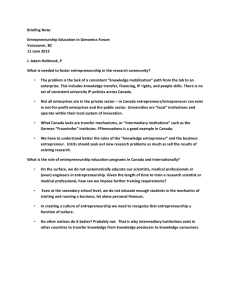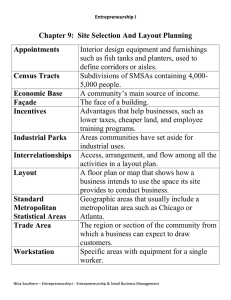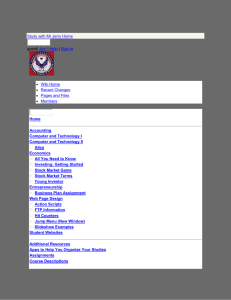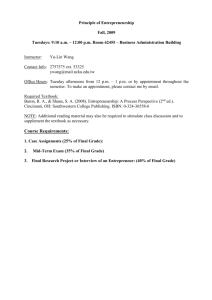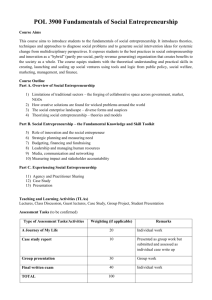Identifying and analyzing opportunities
advertisement
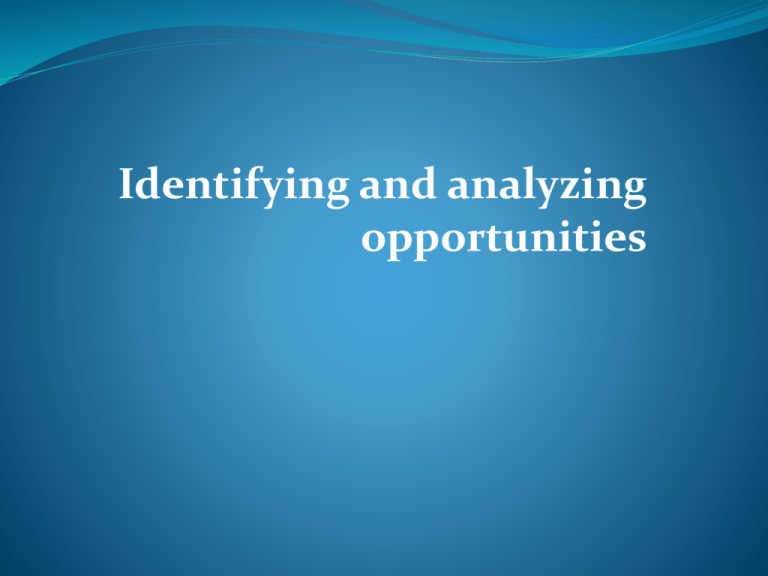
Identifying and analyzing opportunities Learning objectives To know the relation between opportunity and entrepreneurship What are the sources of opportunity What are the sources of information What are the stages from analyzing opportunities to growing the venture How to assess opportunities How to protect the idea(s) Innovation and opportunity Innovation can be successful only when it is linked to customer demand –existing or in future- this is the market opportunity… This is the link between innovation and opportunity and it help entrepreneurial firms in gaining competitive advantage it seeks .. For example Anita Roddick (body shop), Ingvar kampard (Ikea) Opportunity and Information Opportunities are exploited through generating information and awareness which can be gathered through General Information Industry and Market information Competitive company and industry information Government sources Innovation and Entrepreneurship Economic development is the process caused by the enterprise-or innovation and this carried out by entrepreneurs which show a strong relation that innovation has with entrepreneurship It is innovation and entrepreneurship that are at the heart of success for the individual firm and of national advantage Innovation and Opportunity Entrepreneurship/Opportunity Low High High STRUGGLER INNOVATOR Low STAGNATOR COPIER Innovation/ Creativity Sources of Opportunity According to Peter Drucker innovation can be practiced systematically through the creative analysis of change in the environment and the opportunity it generates Entrepreneur need to search purposefully for the sources of innovation that indicate opportunity for them Druker’s Sources of Opportunity The unexpected The incongruity The inadequacy in underlying processes The changes in industry or market structure PLUS Demographic changes Changes in perception, mood or meaning New knowledge Drucker’s 5-stage approach to innovation Analyse opportunities, internal and external. Innovate for NOW – timing is everything Innovation is conceptual and perceptual, so look at financial implications and analyse whether it meets the opportunity Keep innovation simple – KISS! Start small, take an incremental approach Aim at leadership and dominate the competition as soon as possible Opportunity Assessment plan It is not a business plan but compared to it, it is Is Shorter Focuses on opportunity not venture Have no consumer based spreadsheets Is the basis for making the decisions to either act on an opportunity or wait until another, better opportunity comes along. Opportunity Assessment plan cont.. Questions to be asked while assessing an opportunity are Why does this opportunity excites you? How it can solve a problem? Will availing this opportunity return you the benefits? How does the idea fit into your background and experience? What business skills do you have? What business skills are needed? Do you know some one who has these skills? Protecting the Idea Legal Issues in setting up an organization Start up with out patent Trade marks Copyrights Registration procedures (SECP)







